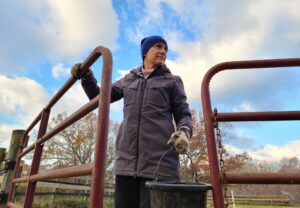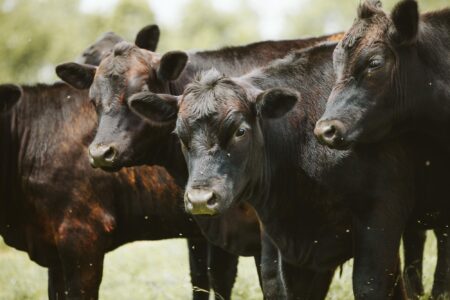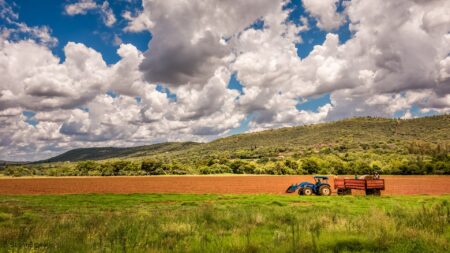DAILY Bites
-
The U.S. has introduced a new trade and investment framework with Argentina, along with tariff-relief agreements involving Ecuador, Guatemala, and El Salvador.
-
Argentina will allow U.S. poultry imports, ease barriers for beef and pork, broaden access for various agricultural goods, and support smoother digital trade and data flows.
-
The agreements also include stronger labor and environmental rules, improved access to critical minerals, and lower tariffs on select imports to help reduce consumer costs without affecting U.S. farm production.
DAILY Discussion
The United States is moving toward one of the most significant Western Hemisphere trade shifts in years. The Office of the U.S. Trade Representative, the White House, and senior administration officials have outlined a new Framework for an Agreement on Reciprocal Trade and Investment with Argentina. The announcement came alongside separate tariff-relief deals with Ecuador, Guatemala, and El Salvador.
The rollout was accompanied by pointed commentary from President Donald Trump on Truth social, in which he defended his tariff strategy, calling people against tariffs, “FOOLS!”
The agreement with Argentina offers American livestock, crop, and specialty producers a range of changes. Argentina will open its market to U.S. poultry within one year and reduce layers of bureaucratic hurdles that have historically slowed shipments of American beef, pork, and related products.
The framework promises to preserve American exporters’ ability to use certain meat and cheese terms, a protection that matters deeply to dairy producers who have faced growing restrictions in other regions of the world.
Beyond meat, Argentina has agreed to expand preferential access for a wide variety of U.S. goods ranging from tree nuts and fresh produce to wheat, wine, and processed foods, strengthening opportunities for farmers and food manufacturers who rely on foreign customers. Similar progress has been made with Ecuador, which will roll back or eliminate agricultural tariffs, including those tied to the Andean Price Band System.
The agreement also may carry significance for ag-technology and data-driven farming as well. Argentina has pledged to treat the United States as an adequate jurisdiction for cross-border data flows while refraining from digital services taxes or customs duties on electronic transmissions. For farmers increasingly dependent on precision-mapping software, cloud-based livestock systems, and telematics embedded in modern equipment, seamless data transfer is now a central element of the agricultural economy.

Labor and environmental standards also factor into the new regional trade landscape. Argentina, Guatemala, and El Salvador have agreed to strengthen labor protections, including bans on imports made with forced or compulsory labor. Ecuador has embraced environmental and forestry governance improvements, as well as the full implementation of international rules on fisheries subsidies. These provisions, while framed around workers’ rights and environmental stewardship, also help level the playing field for American producers who must comply with some of the world’s most rigorous standards.
Another element of the framework touches the critical mineral resources that play an increasingly important role in modern agriculture. Argentina’s commitments to create fair conditions for U.S. firms in its mining sector may help stabilize supply chains for electric tractors, robotics, storage systems, and other advanced equipment that are becoming more common on American farms.
The larger regional package includes the removal of tariffs on products that the United States does not grow or produce in large quantities, such as Ecuadoran bananas and coffee. None of those changes would directly impact U.S. growers, but all have downstream implications for inflation, grocery prices, and consumer spending patterns. Administration officials contend that by reducing those import costs, the cost of living for American families will decrease without undermining U.S. agriculture, since the impacted products do not have any large U.S. production base.
This new wave of trade diplomacy comes at a politically sensitive moment. The administration has highlighted affordability as a core priority after voter concerns over inflation contributed to Republican losses in several states. Officials said those agreements are part of a broader effort to tamp down on household expenses while protecting domestic production. At the same time, foreign leaders from Argentina to Ecuador have embraced the deals as an opportunity to lure investment and deepen ties with the United States. Argentina’s foreign minister hailed the framework as a stepping stone toward more U.S. investment and Central American leaders celebrated the agreements as a route to more competitiveness and economic growth.
U.S. officials said they expect the text to be completed with Argentina and the other partner countries within weeks. Negotiations are still under way with several additional nations, with the possibility of a broader Western Hemisphere strategy by the end of the year.


:max_bytes(150000):strip_icc()/Kevin-Matthews-North-Carolina-Deere-combine-2-2000-933a9b4a41074f4e8519fb2265cc2a50-93c959812f904cb9a2c50b998f8868de.jpeg)






:max_bytes(150000):strip_icc()/49445657561_b1fcbfbcec_o-ec05e784dff44a8498ec134555cf02c3.jpg)

:max_bytes(150000):strip_icc()/102195214_beef_cattle-5c2eb9f466fb4b5cb550eb06fd3405bc.jpg)
:max_bytes(150000):strip_icc()/Markets-4-Soybeans-candlestick-down-15-56fa1f6bc0d943ab952eeaea08f1cf83.jpeg)